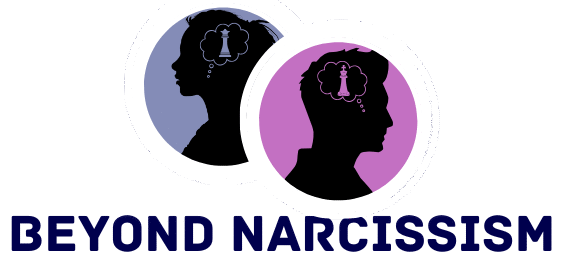Emerging from the shadows of narcissistic abuse can feel like navigating a complex maze with no clear exit. The emotional scars left behind are often deep and enduring, leaving you questioning your sense of worth and reality. While it may seem overwhelming, recognizing the need for healing is the first courageous step toward reclaiming your life. This journey is not just about survival—it’s about rediscovery and empowerment.
Understanding the importance of this topic is crucial, as narcissistic abuse can profoundly impact your mental health and self-esteem. The manipulation and control that define such relationships often leave victims isolated and confused, making recovery a vital process for regaining emotional balance. In this article, we will explore practical techniques that guide you through the healing process, offering strategies to rebuild your confidence and sense of self. From setting healthy boundaries to rediscovering your own voice, our goal is to support you in crafting a path toward emotional freedom and resilience.
Readers will find valuable insights into the dynamics of narcissistic relationships, helping to illuminate the subtle traps that often go unnoticed. We’ll discuss ways to process and release the emotional burden, ensuring that your journey toward healing is both informed and compassionate. By the end of this article, you’ll be equipped with tools to not only recover but to thrive, fostering a renewed sense of hope and possibility in your personal life. Together, we will embrace the strength within you, paving the way for a healthier, more fulfilling future.
1. Establish Firm Personal Boundaries

Establishing firm personal boundaries is crucial in the journey to recover from narcissistic abuse. When you’ve been in a relationship where your boundaries were consistently ignored, it’s vital to reclaim control over your personal space and emotional well-being.
Imagine being at a party where a friend repeatedly interrupts your conversations; you’d naturally feel frustrated and disrespected. Similarly, in a relationship, setting clear boundaries communicates what behaviors are acceptable and what are not, ensuring your needs are respected moving forward.
One practical way to start is by identifying areas where you feel most vulnerable and creating specific rules to protect those areas. For instance, if your privacy has been invaded in the past, you might decide not to share passwords or personal information indiscriminately.
Experts suggest that maintaining boundaries isn’t about keeping people out; it’s about ensuring that your emotional and physical space is respected. This approach helps in fostering healthier relationships where both parties feel safe and valued.
2. Seek Professional Therapy Support

Recognizing the need for professional therapy support can be a pivotal step in recovering from narcissistic abuse. Many individuals find solace and understanding in sharing their experiences with a trained therapist who can provide both validation and guidance.
Therapists specializing in narcissistic abuse recovery can offer tailored strategies that address the unique challenges survivors face. By working closely with a professional, you can begin to reclaim your sense of self and build healthier patterns of thinking.
Consider the story of Emily, who felt trapped in a cycle of self-doubt after her relationship ended. Through therapy, she learned to identify and challenge the negative beliefs instilled by her narcissistic partner, eventually finding her voice and confidence again.
In therapy, you’ll learn to process the emotional turmoil and rebuild your self-esteem, which may have been eroded by the abuse. This safe space allows you to explore your feelings without judgment and gain insights that foster healing and growth.
Investing in therapy is an investment in your future well-being and happiness. As you progress, you’ll find that the skills and tools you develop can empower you to create healthier relationships moving forward.
3. Practice Self-Compassion Daily

Transitioning from professional support to self-healing, it’s crucial to practice self-compassion daily. Just as therapists guide you through the complexities of narcissistic abuse, embracing kindness toward yourself can be a powerful tool for recovery.
Imagine you’re comforting a friend; now, direct that same warmth and understanding inward. Many survivors of narcissistic abuse struggle with self-blame, but it’s essential to replace self-criticism with self-affirmation.
Start each day with a positive affirmation, reminding yourself of your strength and resilience. For instance, saying “I am worthy of love and respect” not only sets a positive tone but also reinforces your self-worth.
According to Dr. Kristin Neff, a pioneer in self-compassion research, embracing self-kindness can significantly reduce emotional suffering. She suggests that treating yourself with the same understanding you offer others can transform your healing journey.
Each small step you take in practicing self-compassion builds a stronger foundation for emotional recovery. By nurturing yourself, you pave the way for healthier relationships in the future, free from the shadows of past abuse.
4. Limit Contact with Toxic Influences

After practicing self-compassion, it’s crucial to start limiting contact with those who have been a source of emotional turmoil. This doesn’t mean you need to cut off all ties immediately, but rather create a safe distance that allows you to heal.
Imagine being in a room filled with smoke; the first step to breathing clearly is stepping out. Similarly, reducing interactions with toxic influences can give you the space needed to regain your emotional balance.
Consider using technology to your advantage by setting boundaries on communication. Blocking or muting on social media can prevent unhealthy interactions, allowing you to focus on nurturing healthier connections.
Experts often suggest creating a “safe zone,” a circle of trust comprised only of supportive friends and family. This helps in reinforcing your boundaries and ensures you’re surrounded by positive influences.
As you limit contact with toxic people, you’ll notice an increase in your emotional clarity and personal strength. This newfound space can become fertile ground for cultivating healthier, more fulfilling relationships in the future.
5. Journal Your Healing Journey

After establishing boundaries and limiting contact with toxic influences, a powerful step toward healing is to journal your personal journey through narcissistic abuse recovery. Journaling not only helps in organizing your thoughts but also acts as a mirror to reflect your growth over time.
Consider writing about specific incidents that have impacted you; this can help in processing emotions and recognizing patterns. For instance, recount how certain situations made you feel and what you would do differently now with your new perspective.
Journaling can also be a space to explore your emotions without judgment, which is critical when recovering from emotional trauma. By acknowledging your feelings, you validate your experiences, which is a vital step in reclaiming your self-worth.
One practical exercise is to create a gratitude list that shifts focus from the negative experiences to the positive aspects of your life. This can be a transformative practice, reminding you of your resilience and helping to foster a more optimistic outlook.
As you continue to journal, you may notice emerging patterns that highlight your growth and resilience. This ongoing documentation can serve as a powerful reminder of how far you have come and the strength you possess to continue moving forward.
Conclusion: Creating Beautiful Outdoor Spaces
In navigating the challenging path of recovery from narcissistic abuse, remember these five vital concepts: recognizing the signs of narcissistic behavior, setting strong personal boundaries, prioritizing self-care and healing, seeking professional counseling or support groups, and rebuilding self-esteem and personal identity. Each of these steps is essential to reclaiming your power and establishing healthier relationship dynamics.
As an actionable next step, take a moment today to journal your thoughts and feelings about your experience. This simple act of reflection can be a powerful tool in your healing journey, helping you gain clarity and affirm your commitment to change.
To ensure you have these invaluable insights at your fingertips whenever needed, be sure to save or bookmark this article. Having this resource readily available can serve as a guiding light whenever you need reassurance or a reminder of your progress.
Looking forward, remember that relationship success is not just possible but inevitable when you empower yourself with knowledge and self-love. You hold the key to transformative growth and fulfilling connections. Embrace this journey with confidence and optimism, knowing you are equipped to foster relationships that honor and respect your true self.
